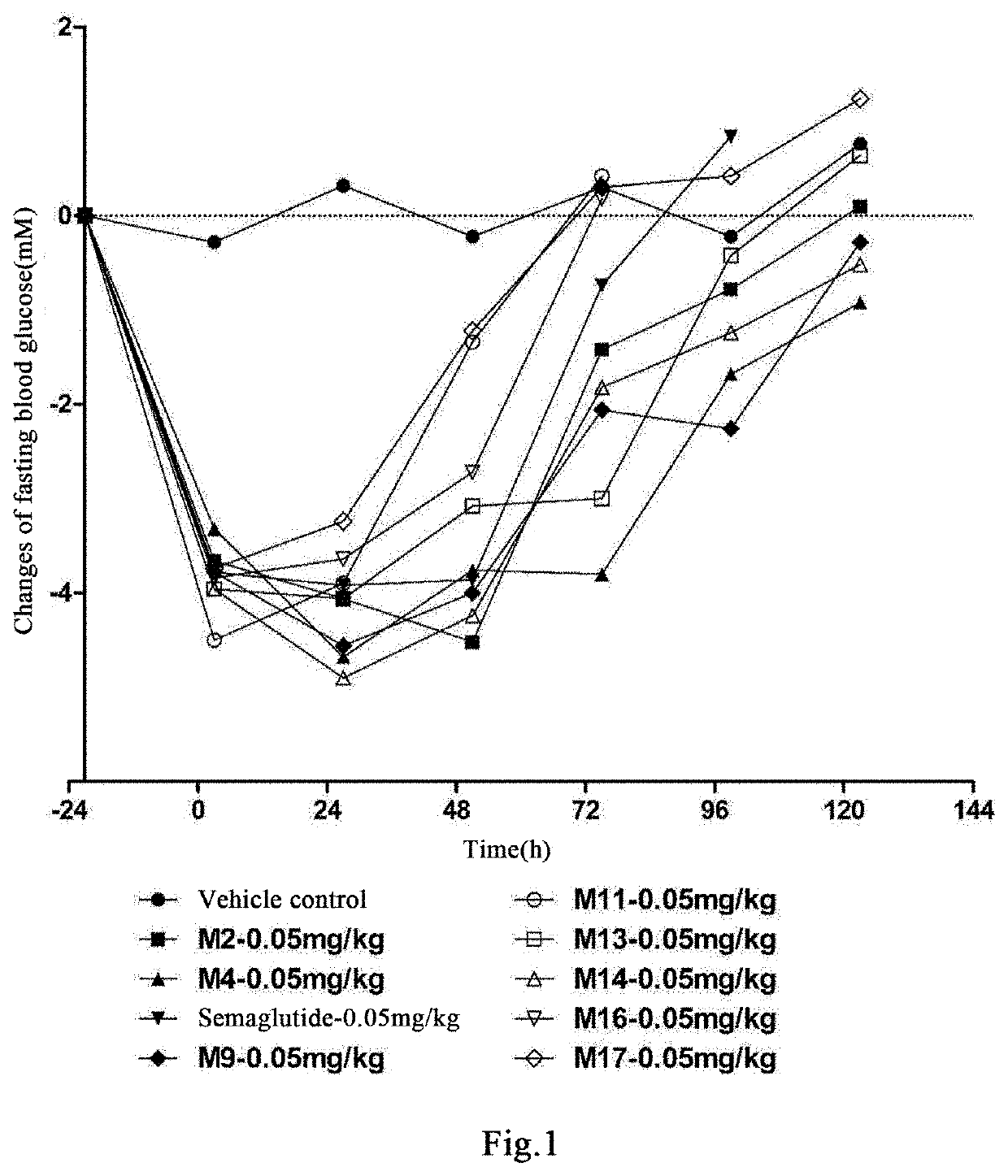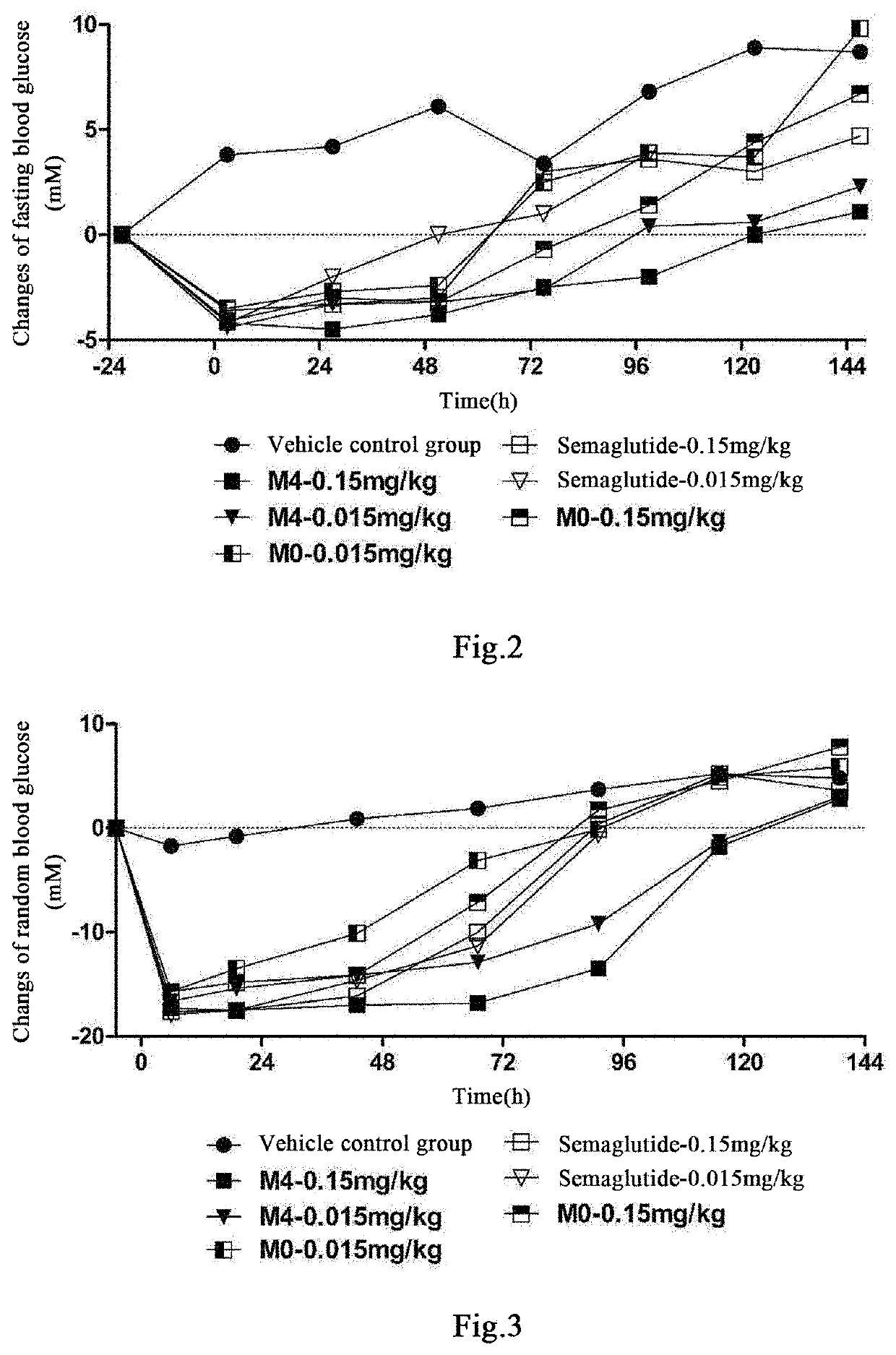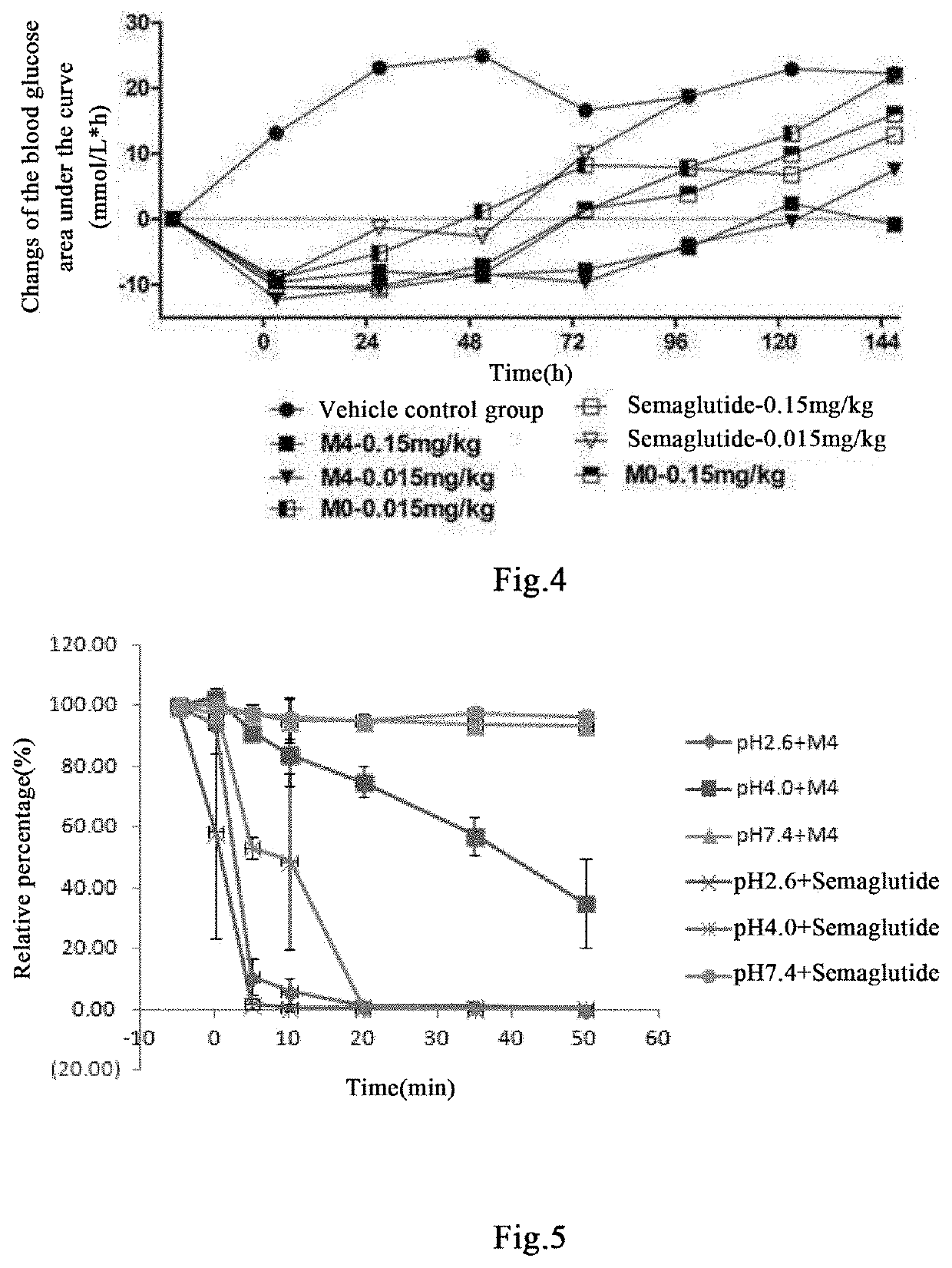Acylated glp-1 derivative
- Summary
- Abstract
- Description
- Claims
- Application Information
AI Technical Summary
Benefits of technology
Problems solved by technology
Method used
Image
Examples
example 1
ion of the Expression Plasmids of GLP-1 Analogues
[0115]
Construction of DNA of Val8Glu22Lys23Arg26, 34-GLP-1(7-37)
[0116]The 6-His tag, SUMO tag, and Val8Glu22Lys23Arg26,34-GLP-1(7-37) encoding gene sequence (SEQ ID NO:7) are fused successively in series, and the gene fragment (SEQ ID NO:18) is obtained by chemical synthesis. Through the BamHI and XhoI sites, the above fragment is inserted into the prokaryotic expression plasmid pET-24(+) and verified by sequencing. The resulting expression plasmid for transformation assay is named
pET-24(+)-His-SUMO-Val8Glu22Lys23Arg26, 34-GLP-1(7-37).
[0117]According to the above method, the corresponding expression plasmids of the following peptides are successively constructed:
(the encoding gene is SEQ ID NO: 3)Val8Glu22Lys26Arg34-GLP-1(7-37), (the encoding gene is SEQ ID NO: 11)Val8Glu22Lys30Arg26, 34-GLP-1(7-37), (the encoding gene is SEQ ID NO: 5)Val8Glu22Lys19Arg26, 34-GLP-1(7-37), (the encoding gene is SEQ ID NO: 9)Val8Glu22Lys27Arg26, 34-GLP-1...
example 2
n of the Fusion Proteins
[0118]The DNA construct described in Example 1 is transformed into BL21 host cells (TrabsGenBiotech., catalog #CD601) for producing the target protein of the present invention. 50 μl of BL21 competent cells are put in an ice bath to melt, then adding the DNA of interest and gently shaking gently, and placing in the ice bath for 30 min. Then heat shock in water bath at 42° C. for 30 seconds, followed by quickly transferring the centrifuge tube to ice bath for 2 min, and do not shake the centrifuge tube during this process. 500 μl of sterile LB medium (without antibiotics) is added to the centrifuge tube, then mixing and culturing at 37° C., 180 rpm for 1 hour to recover the bacteria. 200 μl of transformed competent cells are pipetted and added onto LB agar medium plate containing kanamycin resistance, spreading the cells evenly; placing the plate at 37° C. until the liquid is absorbed, then inverting the plate and incubating at 37° C. overnight. The next day, ...
example 3
ion of the Recombinant GLP-1 Analogues
[0119]50 μl of bacterial suspension (GLP-1 expressing bacterial suspension) is added to 50 ml of LB medium, adding 50 μl of kanamycin at the same time, mixing and putting in 30° C. constant temperature shaker, then inoculating overnight. 10 ml of the bacterial suspension inoculated overnight is added to 1000 ml of LB medium, adding 1000 μl of kanamycin at the same time; then shaking and placing it in a 37° C. shaker at 200 rpm. After inoculation for 4 hours, IPTG with a final concentration of 0.1 mol / L is added into the medium, then shaking and placing it in 30° C. shaker at 180 rpm to induce expression overnight. The bacterial suspension expressed overnight is centrifuged at 13000 g for 60 min. The bacteria yield is about 4 g bacteria / L fermentation broth, and the expression of the protein of interest determined by SDS-PAGE is about up to 40%.
PUM
| Property | Measurement | Unit |
|---|---|---|
| Volume | aaaaa | aaaaa |
| Molar density | aaaaa | aaaaa |
| Molar density | aaaaa | aaaaa |
Abstract
Description
Claims
Application Information
 Login to View More
Login to View More - R&D
- Intellectual Property
- Life Sciences
- Materials
- Tech Scout
- Unparalleled Data Quality
- Higher Quality Content
- 60% Fewer Hallucinations
Browse by: Latest US Patents, China's latest patents, Technical Efficacy Thesaurus, Application Domain, Technology Topic, Popular Technical Reports.
© 2025 PatSnap. All rights reserved.Legal|Privacy policy|Modern Slavery Act Transparency Statement|Sitemap|About US| Contact US: help@patsnap.com



